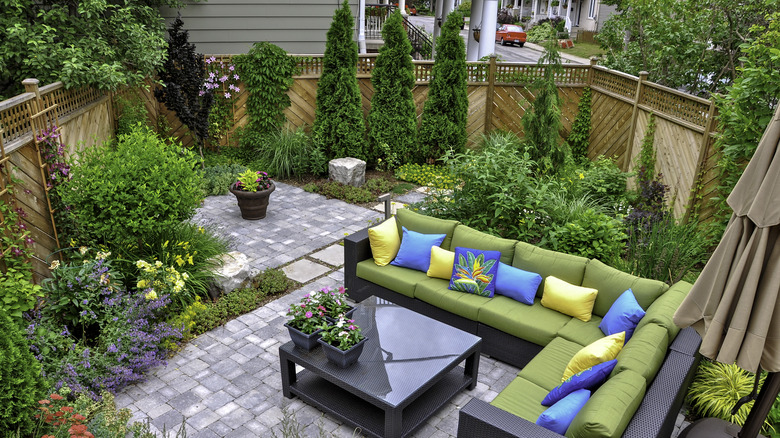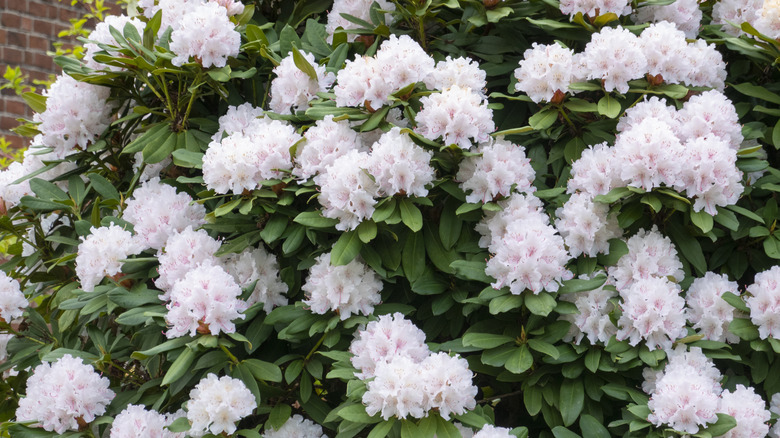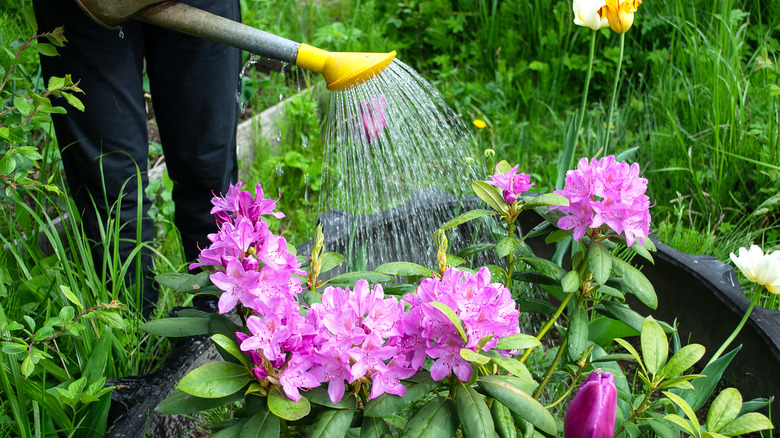Brighten Up Your Small Backyard With This Beautiful Blooming Landscape Idea
If your backyard is small, every choice about what to plant has to be made carefully because it's too easy to run out of space quickly. It's likely you're focused on bringing in as many plants as you can to fill the landscape, but that makes it easy to miss the big picture — choosing plants that also make a substantial visual statement. The rhododendron will fit the bill, even in a cozy garden, making it one of 50 small backyard landscaping ideas that will transform your space.
Because there are many varieties of rhododendron, shrubs can grow from 4 feet tall to more than 20 feet. Whatever height, the rhododendron promises blooms of five-petal flowers ranging in colors from purple to pink to red to white. These plants are also incredibly easy to care for, but it's important to note that according to the ASPCA, rhododendrons are toxic to dogs, cats, and horses. So, if you think your wild one might nibble on one of the flowers or leaves, you might want to pass on this plant because it can result in a deadly reaction.
Consider native rhododendron varieties first
If the rhododendron seems to be the right plant for you, choose a native variety. While there are more than 1,000 around the world – with almost 30 North American native varieties – gardening experts say that it's important to pick a species that will provide the needed ecosystem for birds, butterflies, and other pollinators in your zone in the United States. For year-round visual interest, look to a handful of rhododendrons that are evergreens. They will keep their shiny, stout, green leaves in the winter, even in snow. If temperatures are expected to take an unexpected dip, one of the best ways to care for your rhododendron bushes is to cover them in sacks and shelter with windbreaks made from lattice or fencing. Some varieties include Carolina rhododendron (Rhododendron carolinianum), catawba rhododendron (Rhododendron catawbiense), and rosebay rhododendron (Rhododendron maximum).
There are also some beautiful cultivated species, which are often bred for unusual colors, unique-looking leaves, resistance to disease and seasons, shorter heights, and extra fullness. Some include Rhododendron x yakushimanum 'Gold Prinz' for its offbeat yellow flowers, Rhododendron makinoi 'Makino' for its frosty finger-like leaves, and Rhododendron 'Dora Amateis' for its spicy fragrance.
Get the soil right, then sit back and enjoy
Rhododendron is known for being incredibly easy to care for. For the most part, all they need is rainfall and some shade, although they can tolerate full sun in colder climates. The rhododendron is also usually resistant to diseases and pests.
Get it in the ground in the fall or early spring, and water regularly the first year. The soil should be acidic, with a pH of 4.5 to 6. If you've found a spot where you would like to home the shrub, you can purchase a DIY testing kit. Whatever the results, you can add materials such as wood ashes to up the pH or pine needles to decrease it. The soil should also be moist and drain well. Mixing in some organic material like compost is also beneficial whether it's store-bought or homemade. With all varieties, the best way to propagate rhododendron for more gorgeous blooms is with cuttings, which should be taken between September and December.


